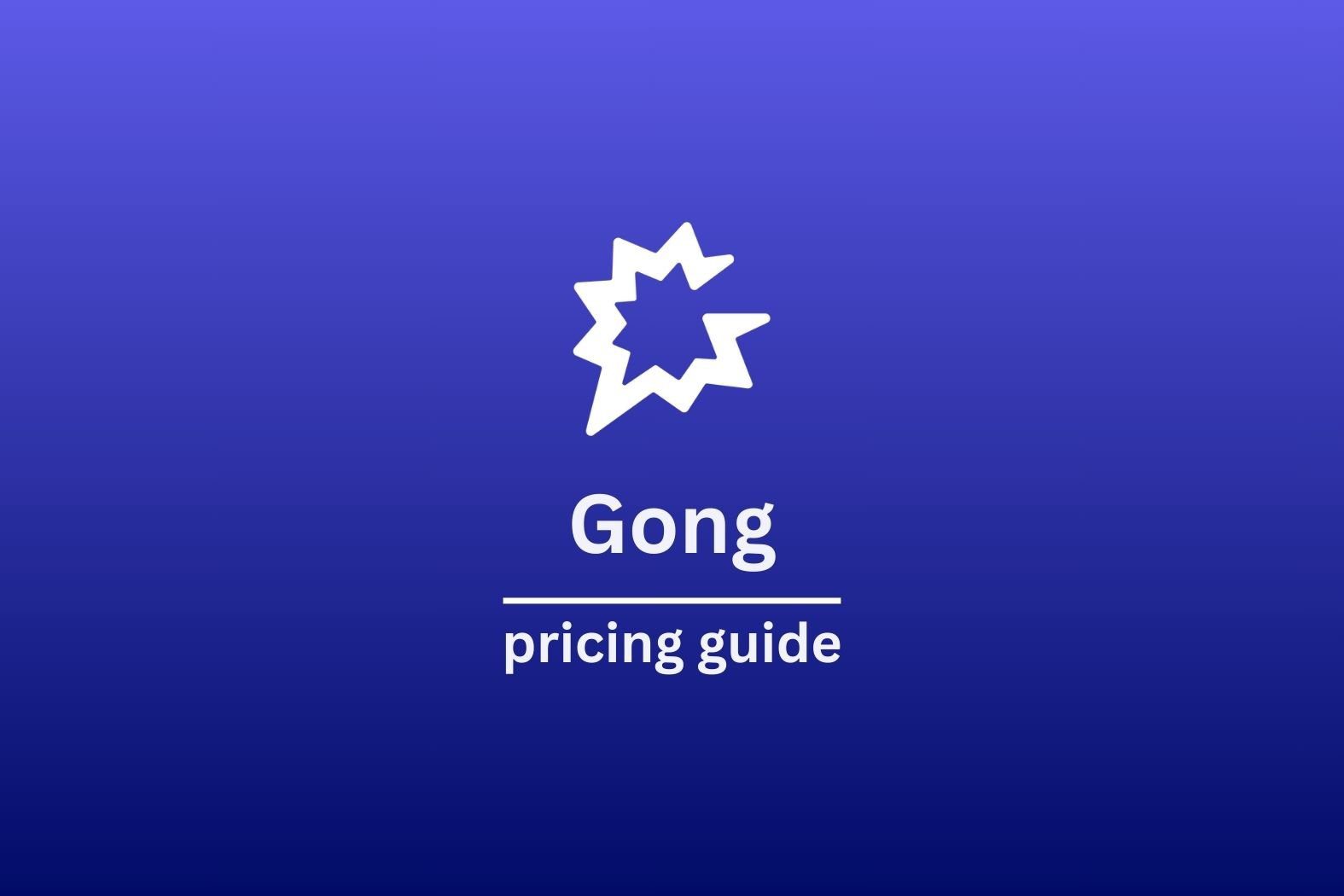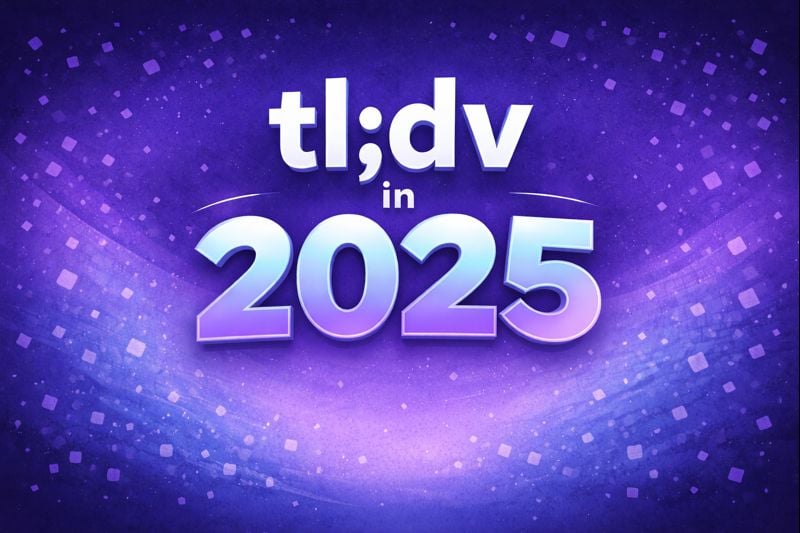Im sich ständig drehenden Tango der Unternehmenswelt hat der Vertrieb den Tanz angeführt. Erinnern Sie sich noch an die alten Zeiten, in denen der Abschluss eines Geschäfts mit smarten Männern in eleganten Anzügen, verrauchten Räumen und herzlichem Händeschütteln verbunden war? Igitt. Wie auch immer, winken Sie ihnen zu, wenn sie in den Sonnenuntergang reiten, denn die Vertriebslandschaft hat ihre Oxfords gegen digitale Turnschuhe getauscht und ist mit ziemlicher Sicherheit einen großen Teil des Elements MENSCHENFEHLER losgeworden.
@tldv.io Ich glaube, wir haben das Problem gefunden. #Verkauf #Produktmanagement #Produktmanager #Startup #Technologie
♬ Originalton - tldv.io - KI-Meeting-Recorder
Jetzt haben wir eine Entwicklung erlebt, die Darwin zustimmend nicken lassen würde - vom scharfen Klingeln der Registrierkassen bis zum leisen, fast unmerklichen Ping der Online-Benachrichtigungen. Und was kommt als Nächstes? Hier kommt der virtuelle Verkaufsassistent. Nein, es handelt sich nicht um einen holografischen Verkäufer, der an Ihrer Tür auftaucht. (Obwohl, wäre das nicht ein schöner Anblick? Vielleicht im Jahr 2050?) Es ist die moderne Lösung für einen uralten Beruf. Wenn Sie immer noch Memos verschicken und sie nicht auf die lange Bank schieben, sollten Sie sich einen (virtuellen) Stuhl heranziehen. Das hier ist für Sie.
Inhaltsübersicht
Was ist ein virtueller Vertriebsassistent?
Stellen Sie sich einen Moment lang vor, Iron Man's Jarvis hätte beschlossen, seine Karriere auf den Verkauf auszurichten. Das ist, kurz gesagt, Ihr virtueller Vertriebsassistent (VSA). Er ist zwar weniger dramatisch, aber ebenso beeindruckend in seinen Fähigkeiten.
Ein VSA ist kein Roboter, der ein Headset trägt - so sehr uns diese Vorstellung auch reizt -, sondern vielmehr eine leistungsstarke Kombination aus KI-gesteuerter Software und Datenanalyse.
Im Kern geht es bei der KI in einer VSA nicht nur um die Ausführung von Befehlen. Sie lernt und passt sich an. Mithilfe von Datenanalysen analysiert sie riesige Mengen an Informationen, um Muster, Verhaltensweisen und Vorlieben zu erkennen. So kann die VSA zukünftige Kundeninteraktionen auf der Grundlage historischer Daten vorhersagen und ihren Ansatz entsprechend anpassen. Dieser tiefe Einblick in die Daten bedeutet, dass die Interaktionen sowohl effizient als auch maßgeschneidert sind, was zu einem intelligenteren Verkaufsansatz führt. Sein Hauptziel? Die Art und Weise zu revolutionieren, wie Unternehmen mit Leads umgehen und Geschäfte abschließen. Auch wenn es vielleicht nicht das Charisma eines leistungsstarken Vertriebsmitarbeiters hat, macht es dies durch seine Effizienz und sein Engagement mehr als wett. Ob Regen oder Sonnenschein, Feiertag oder Arbeitstag - ein VSA ist unermüdlich im Einsatz, unterstützt, analysiert und automatisiert.
Wenn wir sagen, dass eine VSA auf KI basiert, denken Sie nicht nur an einfache Algorithmen. Sie setzt aktiv maschinelles Lernen ein, um ihre Antworten im Laufe der Zeit zu optimieren und ihren Ansatz auf der Grundlage von Echtzeit-Feedback zu verfeinern. Kombinieren Sie dies mit Datenanalysen, und Sie haben ein Tool, das nicht nur vergangenes Kundenverhalten versteht, sondern auch zukünftige Bedürfnisse und Reaktionen vorhersehen kann.
Erinnern Sie sich an das alte Sprichwort, dass man nicht härter, sondern intelligenter arbeiten sollte? VSAs verkörpern diese Philosophie. Sie kümmern sich um die kleinsten Aufgaben wie Dateneingabe, Priorisierung von Leads und Nachfassaktionen, damit sich Ihr Team auf strategischere Aufgaben konzentrieren kann. Oder vielleicht sogar die Mittagspause ohne das ständige Klingeln von E-Mails genießen?
Wie können virtuelle Vertriebsassistenten den Vertriebsprozess verbessern?
In einer Welt, in der jede Sekunde zählt und die Konkurrenz nur einen Klick entfernt ist, ist ein Wettbewerbsvorteil im Vertrieb nicht nur ein Bonus, sondern eine Notwendigkeit. VSAs bringen eine Mischung aus Technik und Hartnäckigkeit mit und bieten die Möglichkeit, eine Reihe von Tools zusammenzubringen, die den Vertriebsweg rationalisieren. Von der Verwaltung von Google Meet-Transkriptionen bis hin zur Einbindung von Zoom - diese Tools sind von unschätzbarem Wert.
Die Sales Journey: Von der Kälte zur Konversion
Der Verkaufsprozess verläuft nicht linear, sondern ist eine Reise, bei der jede Phase einen anderen Ansatz und ein anderes Toolkit erfordert. Hier sind virtuelle Vertriebsassistenten, Vertriebstools und Technologien wie tl;dv von unschätzbarem Wert. Um jedoch einen 360-Grad-Blick zu erhalten, sollten wir uns den Vertriebsprozess von Anfang an ansehen.
1. die Akquise und Lead-Generierung:
Der Vertrieb beginnt oft mit der Akquise, und KI-gesteuerte Tools wie der Sales Navigator von LinkedIn können hier eine entscheidende Rolle spielen. Ein VSA könnte so eingerichtet werden, dass er LinkedIn-Profile scannt und Daten über potenzielle Leads sammelt. Die Automatisierung dieser Phase deutet bereits auf die kommenden Effizienzsteigerungen hin. Zwar müssen Sie darauf achten, dass Sie die Nutzungsbedingungen von LinkedIn einhalten, aber Tools wie Hunter.io und Apollo.io eignen sich hervorragend, um potenzielle Kunden zu finden, die Sie ansprechen können.
2. Cold Outreach
Sobald Sie eine Liste potenzieller Leads haben, können Sie mit Cold-E-Mail-Tools wie Instantly oder Quickmail Kontakt aufnehmen. Diese Plattformen ermöglichen personalisierte E-Mail-Kampagnen, die Verfolgung der Öffnungsraten und die Planung von Folgemaßnahmen. Es gibt sogar einige KI-Funktionen, die sicherstellen, dass Ihre E-Mail-Domänen geschützt sind. Apollo verfügt ebenfalls über einige Funktionen zum Versenden von Nachrichten. Sie können auch Optionen wie Zopto in Betracht ziehen, wenn Sie lieber den Weg der direkten Nachrichtenübermittlung gehen möchten.
3. Lead Nurturing
Wenn sich die Leads im Verkaufstrichter nach unten bewegen und "opted in" werden, können Tools wie Mailchimp oder HubSpot für gezieltere Marketingmaßnahmen eingesetzt werden, um Webinare, Whitepaper oder andere relevante Inhalte anzubieten. Der VSA kann in diese Plattformen integriert werden, um das Engagement zu verfolgen und sicherzustellen, dass warme Leads kontinuierlich angesprochen und einer Konversion näher gebracht werden.
4. Verkaufserfassung/Follow-up:
Hier kommt ein Werkzeug wie tl;dv glänzt. Nach einem Verkaufsgespräch oder einem Webinar ist es wichtig, die wichtigsten Punkte zu erfassen und zusammenzufassen. Die Integration von tl;dv gewährleistet, dass jedes Wort erfasst wird und schnell referenziert werden kann. Für Vertriebsleiter ist es ein fantastisches Tool für Schulungszwecke, das neuen Teammitgliedern reale Beispiele für Vertriebsszenarien liefert.
5. Verkaufsmanagement und Abschluss
Salesforce, ein führendes CRM, verfolgt alle Interaktionen mit einem Lead oder Kunden. Ein in Salesforce integrierter VSA kann Daten über frühere Interaktionen abrufen und so sicherstellen, dass Folgekommunikation relevant und zeitnah erfolgt. Vertriebsmanagern bietet Salesforce einen umfassenden Überblick über die Vertriebspipeline, der ihnen hilft, ihr Team zu managen und zukünftige Verkäufe zu prognostizieren.
6. Schulung und Skalierung von Vertriebsteams
Wenn Vertriebsteams wachsen, wird die Schulung zu einem wichtigen Thema. Plattformen wie tl;dv können hier ein Segen sein. Durch die Überprüfung tatsächlicher Verkaufsinteraktionen können neue Teammitglieder bewährte Verfahren und häufige Fallstricke lernen. Darüber hinaus können VSAs eingesetzt werden, um Verkaufsszenarien zu simulieren und neuen Mitgliedern die Möglichkeit zu geben, zu üben, bevor sie mit tatsächlichen Kunden in Kontakt treten.
Und das ist noch nicht alles: Es gibt noch ein paar andere coole "Tricks", die Ihr virtueller Vertriebsassistent während des Verkaufszyklus anbieten kann.
Bleiwette: Die moderne Wünschelrute
Es gab eine Zeit, da hing das Schicksal eines potenziellen Verkaufs von einem Bauchgefühl oder - Gott bewahre - von einem Würfelwurf ab. Jetzt gibt es das Lead Scoring, den Zauberstab der VSA. Mithilfe von Algorithmen, die Mathematiker vor Freude weinen lassen würden, bewerten VSAs potenzielle Leads anhand zahlreicher Kriterien und weisen ihnen Punkte zu, die ihren potenziellen Wert angeben. Es ist wie bei der Partnervermittlung, nur dass wir keine Dates arrangieren, sondern Geschäfte abschließen. Indem Sie bestimmen, welche Interessenten reif für die Ernte sind und welche etwas mehr Pflege benötigen, tappt Ihr Vertriebsteam nicht mehr im Dunkeln. Sie haben ein GPS für den Erfolg, das sie direkt zum Gold führt.
Automatisierte Antworten: Effizienz trifft auf Eleganz
Haben Sie schon einmal eine "Danke für Ihre Anfrage"-Nachricht in Mikrosekunden erhalten? Das ist die praktische Arbeit eines VSA. Automatisierte Antworten sorgen dafür, dass kein Lead hängen gelassen wird. Es ist, als ob Sie einen Butler für Ihr Verkaufsteam hätten, der immer zur Stelle ist und tadellos höflich. Auch wenn die persönliche Note einer handschriftlichen Notiz fehlt, übertrumpft im schnelllebigen digitalen Zeitalter die Geschwindigkeit oft die Gefühle. Eine schnelle Antwort kann den Unterschied ausmachen, ob Sie einen potenziellen Kunden für sich gewinnen können oder ob er zur Konkurrenz abwandert.
Daten in Maßnahmen umwandeln
Ein VSA sammelt nicht einfach nur Daten, sondern wandelt sie in eine gut definierte Strategie um. Mit der Fähigkeit, vergangene Interaktionen, Kundenfeedback und Markttrends zu analysieren, destillieren diese digitalen Dynamiker riesige Mengen an Informationen in umsetzbare Erkenntnisse. Vorbei sind die Zeiten, in denen man sich durch endlose Tabellenkalkulationen wühlen musste, um den einen oder anderen Weisheitsschatz zu finden. Jetzt übernimmt die VSA die schwere Arbeit und bietet einen maßgeschneiderten Fahrplan, der für den Erfolg optimiert ist.
Warum also der Rummel? Vorteile von virtuellen Vertriebsassistenten.
Wir befinden uns in einer digitalen Renaissance. Die Unternehmen nutzen Plattformen für remote UX-Forschung und Tools, die die Transparenz am Arbeitsplatz fördern, und die Dynamik entwickelt sich ständig weiter. Wenn Vertriebsabteilungen Kunstgalerien wären, wären virtuelle Vertriebsassistenten die ausgestellten Da Vincis.
Effizienz im Betrieb
Zeit, sagt man, ist Geld. Und VSAs sind die ultimativen Zeitsparer. Von der Automatisierung alltäglicher Aufgaben bis hin zur Sicherstellung, dass kein Lead vergessen wird, sorgen diese digitalen Meister für einen reibungsloseren Ablauf als eine Jazz-Playlist an einem Sonntagmorgen. Verabschieden Sie sich von den endlosen Hin- und Herbewegungen und den manuellen Dateneingaben. Mit einem VSA geht es darum, mit weniger mehr zu erreichen - und das gut.
Erhebliche Kosteneinsparungen für Unternehmen
Ein VSA ist zwar nicht kostenlos, aber er kostet nur einen Bruchteil der Kosten eines Vollzeitbeschäftigten, ohne die zusätzlichen Kosten für Gesundheitsleistungen, Büroraum oder Kaffeepausen. Lassen Sie uns kurz nachrechnen: Wenn ein mittelgroßes Unternehmen jährlich Tausende von Euro für die manuelle Lead-Generierung und Nachfassaktionen ausgibt, kann ein VSA diese Kosten um ein Vielfaches senken und dabei die gleichen, wenn nicht sogar bessere Ergebnisse erzielen. Hurra!
Verbesserte Konversionsraten - ein typisches Beispiel
Wenn wir über VSAs sprechen, geht es nicht nur um das Zählen von Leads, sondern um das Verständnis menschlicher Verhaltensweisen. Stellen Sie sich Folgendes vor: Ein potenzieller Kunde, der von Ihrem Produkt fasziniert ist, stellt eine Anfrage. Innerhalb weniger Augenblicke erhält er eine zeitnahe, personalisierte Antwort. Er fühlt sich gesehen, geschätzt und wichtig. Vergleichen Sie nun diese sofortige Verbindung mit dem stundenlangen, wenn nicht gar tagelangen Warten auf eine menschliche Antwort. Der Enthusiasmus des Interessenten könnte nachlassen, und Sie könnten eine einmalige Chance verpassen.
VSAs greifen dieses unmittelbare Bedürfnis nach Anerkennung auf, das unser digitales Zeitalter kultiviert hat. In einer Welt der sofortigen Befriedigung, in der sich ein zweitägiger Versand wie eine Ewigkeit anfühlt, kann die rasche Effizienz eines VSA den Kunden das Gefühl geben, dass man sich um sie kümmert. Es ist ein psychologischer Tanz, bei dem schnelle Antworten zu einem tieferen Engagement führen und eine Bindung schaffen können, noch bevor die erste menschliche Interaktion stattfindet.
Die Zukunft der VSAs in der Wirtschaft
Stellen Sie sich einen Moment lang eine Welt vor, die durch virtuelle Vertriebsassistenten verändert wird. Die Veränderungen finden nicht nur im Hier und Jetzt statt, sondern wirken sich auf eine breitere zukünftige Landschaft aus:

Die Global Business Clock
Für Unternehmen, die globale Kunden betreuen wollen, ist das ein entscheidender Vorteil. In der Vor-VSA-Ära hätte ein Unternehmen möglicherweise mehrere regionale Büros benötigt, um Vertriebsanfragen rund um die Uhr zu bearbeiten. Aber mit VSA gibt es einen stets aufmerksamen Vertreter, der sich um Anfragen von Sydney bis San Francisco kümmert. Dieser nahtlose Betrieb kann dazu führen, dass internationale Märkte auch für kleine und mittelständische Unternehmen leichter zugänglich werden, ohne dass exorbitante Betriebskosten anfallen.
Datengesteuerte Produktentwicklung
VSAs verkaufen nicht nur, sie sammeln auch unschätzbare Erkenntnisse über Kunden. Stellen Sie sich ein Unternehmen vor, das seine Produktentwicklung auf der Grundlage des von VSAs in Echtzeit gesammelten Feedbacks maßschneidert. Mit der Zeit werden die Produktangebote so genau auf die Kundenbedürfnisse abgestimmt, dass sie in ihrer Präzision fast übersinnlich erscheinen.
Neuerfindung der Rolle des Vertriebs
Da die sich wiederholenden Aufgaben automatisiert werden, wird sich die Rolle des Vertriebsmitarbeiters wahrscheinlich wandeln. Es könnte zu einer Verschiebung kommen, bei der sich die Vertriebsteams mehr mit dem Aufbau von Beziehungen, Strategien und der Lösung komplexer Probleme befassen, anstatt mit Routineaufgaben. Das ist eine Aufwertung des menschlichen Elements, bei der Soft Skills und Kreativität im Mittelpunkt stehen.
Diese hypothetische Erkundung ist keine reine Fantasie. Es ist ein Blick in eine Zukunft, in der VSAs das gesamte Ökosystem des Vertriebs umgestalten könnten, indem sie Unternehmen flinker machen, Produkte besser auf sie abstimmen und die Aufgaben des Vertriebs vielfältiger und lohnender gestalten.
Wie Sie Ihre eigene VSA haben
Träumen Sie von einem virtuellen Vertriebsassistenten, der Ihre Vertriebslandschaft auf Vordermann bringt? Hier ist Ihr Fahrplan für den Einstieg:
1. Legen Sie klare Ziele fest:
Bestimmen Sie Ihren primären Bedarf. Soll Ihr VSA die ersten Kundenanfragen verwalten oder mit Tools integriert werden, die Zoom Aufzeichnungen herunterladen, um Erkenntnisse zu gewinnen? Die Festlegung Ihrer Ziele gewährleistet, dass Sie die richtige, auf Ihre Bedürfnisse zugeschnittene Lösung wählen.
2. Wählen Sie einen seriösen Anbieter:
Es gibt eine Fülle von VSA-Lösungen, von eigenständiger Software bis hin zu umfassenden CRM-Integrationen. Recherchieren Sie Anbieter, lesen Sie Bewertungen und testen Sie vielleicht sogar einige davon. Zu den großen Playern in diesem Bereich gehören ab 2022 HubSpot, Salesforce und Drift, aber halten Sie immer Ausschau nach neuen Anbietern.
3. Trainieren Sie Ihren VSA (und Ihr Team!):
Obwohl KI-gesteuert, sind VSAs keine einfache Plug-and-Play-Angelegenheit. Füttern Sie sie mit Daten, stimmen Sie ihre Antworten ab und stellen Sie sicher, dass sie die Stimme Ihrer Marke widerspiegeln. Ebenso wichtig ist es, Ihr Vertriebsteam so zu schulen, dass es sich nahtlos in den VSA einfügt und die technologische Zusammenarbeit in Vertriebsmagie verwandelt.
4. Überwachen, Anpassen, Wiederholen:
Wie bei jedem anderen Tool wird die Effizienz einer VSA durch regelmäßige Updates gesteigert. Behalten Sie das Kundenfeedback im Auge, analysieren Sie die Leistungskennzahlen der VSA und passen Sie sie bei Bedarf an. Die digitale Landschaft entwickelt sich ständig weiter, und das sollte auch Ihr VSA.
tl;dv - Der beste Kumpel Ihres VSA
In einer Zeit, in der Videoanrufe in der Geschäftswelt an erster Stelle stehen, ist es von größter Bedeutung, dass Sie jede noch so kleine Information erfassen.
Bei tl;dv geht es nicht nur um die Aufzeichnung von Videoanrufen, sondern auch um die Aufbereitung von Daten. Durch das Transkribieren, Zusammenfassen und Kategorisieren der wichtigsten Punkte Ihrer Videoanrufe wird sichergestellt, dass kein wichtiges Detail verloren geht. Betrachten Sie es als Ihren digitalen Schreiber, der immer bereit ist, eine kurze Zusammenfassung zu liefern oder bei Bedarf tief in die Details zu gehen.
Verbesserung der CRM-Integration
Customer Relationship Management (CRM)-Systeme sind das Rückgrat der Vertriebsarbeit. Durch die Integration von tldv.io in Ihr CRM-System speichern Sie nicht nur Aufzeichnungen von Videoanrufen, sondern bereichern Ihre Datenbank mit verwertbaren Erkenntnissen. Jeder Anruf wird zu einem Wissensreservoir, das Ihr CRM mit neuen Informationen füttert, um gezielte Verkaufsstrategien zu entwickeln.
Verstärkung der VSA-Erfahrung
Stellen Sie sich ein Szenario vor, in dem Ihr virtueller Vertriebsassistent (VSA) nahtlos Erkenntnisse aus Ihren letzten Videoanrufen ziehen kann. Diese Erkenntnisse werden ursprünglich in tl;dv erfasst und dann automatisch in Ihr CRM importiert und sind sofort einsatzbereit. Der VSA kann dann Nachfassaktionen personalisieren oder Antworten auf der Grundlage der tatsächlichen Gespräche formulieren und so sicherstellen, dass jede Interaktion informiert und relevant ist. Die Kombination aus der präzisen Erfassung von Videoinhalten durch tldv.io und den prompten Antworten eines VSA schafft eine Harmonie aus Effizienz und persönlicher Note.
Ein hypothetisches Szenario von VSA und tl;dv in Aktion
Stellen Sie sich vor, Jane, eine Vertriebsmitarbeiterin, hatte gerade ein wichtiges Videogespräch mit einem potenziellen hochrangigen Kunden, Herrn Smith. Nach dem Gespräch ist Jane mit anderen Besprechungen überlastet. Hier kommt tldv.io ins Spiel: Es erfasst, transkribiert und fasst die entscheidenden Momente des Gesprächs sofort zusammen. Später nutzt Janes virtuelle Vertriebsassistentin diese kurze Zusammenfassung, um eine personalisierte Follow-up-E-Mail zu verfassen, in der sie die wichtigsten Diskussionspunkte hervorhebt und die nächsten Schritte vorschlägt, und erkennt so die Bedeutung von Herrn Smith. Herr Smith, der von der schnellen und sachdienlichen Antwort beeindruckt ist, fühlt sich geschätzt und ist eher bereit, weiterzumachen. Der Super-Shimmy-Tanz von VSA und tl;dv hat gerade einen potenziellen Lead in eine vielversprechende Konversion verwandelt.
Dies ist nur eine Möglichkeit, wie Sie von der Arbeit mit VSA und tl;dv profitieren können, aber es ist nur die Spitze des Eisbergs.
Brauchen Sie also wirklich einen virtuellen Vertriebsassistenten?
Im digitalen Zeitalter stellt sich nicht die Frage, ob Sie sich einen VSA leisten können, sondern vielmehr, ob Sie es sich leisten können, keinen zu haben. Angesichts der sich schnell entwickelnden Vertriebslandschaft ist Stillstand keine Option. VSA ist nicht nur effizient, sondern auch anpassungsfähig und lässt sich nahtlos in moderne Tools integrieren. Apropos, haben Sie schon einmal daran gedacht, tl;dv auszuprobieren? Mit einem großzügigen kostenlosen Angebot ist es ein risikofreier Einstieg in die Zukunft der Videoanrufanalyse.
Da VSA und tl;dv im Tandem arbeiten, ist sichergestellt, dass keine wichtigen Informationen verloren gehen. Es geht nicht darum, die menschliche Note zu ersetzen, sondern sie zu verstärken. Bei der Einführung von VSA und modernsten Vertriebstechnologien wie tl;dv geht es nicht nur darum, Schritt zu halten, sondern den Weg zu ebnen. Auf dieser transformativen Reise ist die Vorhut zweifellos im Vorteil.





